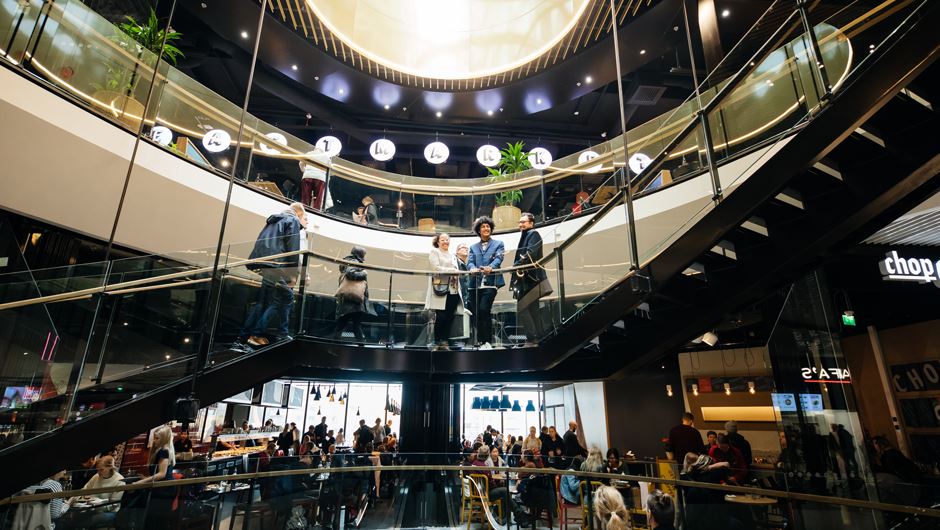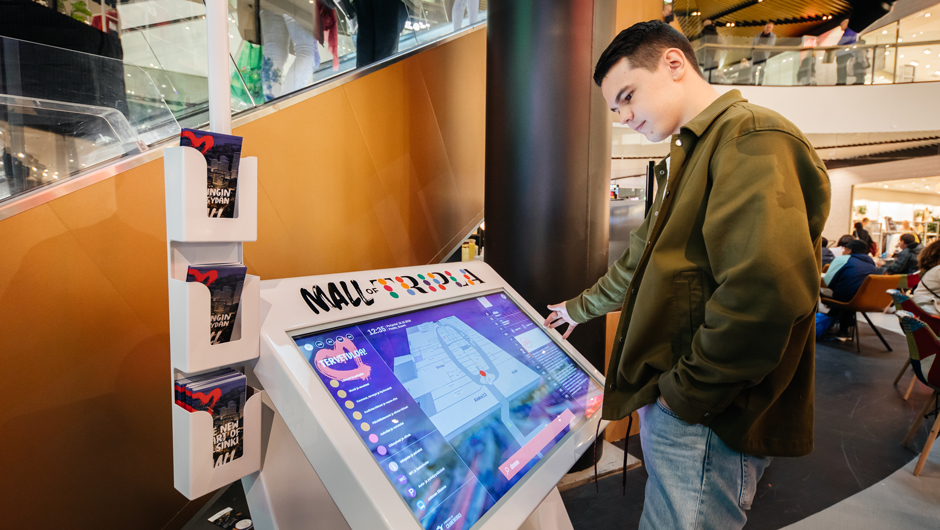Clean transition creates growth for Europe
- Blog
- Shops and retails
- 10/21/2020
The revival of shopping centres
I have now followed speculation about the death of shopping centres and retail for a decade, even two, with great interest. However, it still hasn’t happened and it doesn’t appear it will in the future either.

Behind all of this there is a change that’s not so easy to see. Ironically, the retail industry may now be on the brink of a renaissance, but it has a greater chance of success than ever before. Do we dare to think out of the box and find new ways to succeed?
As old business models fade and e-commerce flourishes, it’s easy to draw the simple conclusion that retail sales are moving online. This is largely the case, but shopping centres are already – not even mentioning the future – public spaces at the crossroads of e-commerce and physical commerce, a combination of the online and offline.
In an article, EFMP (European Field Marketing Partners) says that they find the combination of online space and physical space to be a lucrative trend. It creates trust in the shopping centre business as a form of property investment and shows that the development of shopping centre construction has been stable and strong in Western Europe throughout 2019. Kearney, a 90-year-old American consulting firm, has been exploring ways to make shopping centres a success in the future. They speak about the same issue.
Retail stores will partly become showrooms as products are purchased online and delivered to homes or can be picked up quickly from a central point in the shopping centre. This trend is expected to grow exponentially. The growth of e-commerce is directly reflected in innovations in shopping centres that strengthen e-commerce and vice versa. The Westfield shopping centre in London envisions that by 2028 magic mirrors and body scanners will be in fitting rooms, and smart toilets and service robots will be commonplace.
It’s all centred around people. The importance of consumer understanding and appreciation is emphasised. I argue that a shopping centre that makes a value and brand promise and implements it in its daily life with the lessees will succeed. Although one or two fifths of every euro spent on retail in Europe is spent online, the ever-growing population has time and money left to spend in shopping centres as well.
Kearney consultants Michael Brown and Matt Lubelczyk state that, for the first time ever, there will be as many as six generations of consumers in the consumer market at the same time: the quiet generation (age group 75–90), the baby boom generation (age group 55–75), the X generation (age group 40–55), the millennials (age group 23–40), the Z-generation (age group 4–22) and a new vigorous alpha generation of under-fours.
What about the factors that differentiate shopping centres?
The world is urbanising, and Finland with it. Shopping centres will form new types of city centres with cultural activities, such as libraries, museums, churches, medical centres, educational institutions and hotels, all becoming a part of shopping centres to begin with. They are no longer enough to stand out. People expect to experience interesting, diverse and topical cultural activities in shopping centres. Living in or within the immediate vicinity ofa shopping centre is also becoming more common, as are different models of working.
Digitalisation has been evident for a long time. Almost 10 years ago, the global McKinsey & Company (Fantoni, Hoefel and Mazzarolo), among others, knew how to crystallise the megatrends of the digital age and how shopping centres would have to reinvent themselves to cope with it.
It is apparent that shopping centres are also becoming learning environments or spaces where consumers can acquire new skills and build social networks. “DIY centres” are created, such as restaurants with cooking courses or fabric stores with sewing courses. Hobby clubs, professionals and companies whose businesses are based on doing things, for example, are good examples of actors in change who also need mentoring to succeed. In the shopping centre of the future, people can enjoy the pulse of the city or urban silence, watch performances and activities or attend themselves.

The outcome of Kearney’s study is four different variations of the types of shopping centres of the future.
The first is a Destination Center, which is easy to reach from afar, both by public transport and on your own. The centres are large and contain a lot of innovative service solutions and experiences in addition to retail. There are already such centres around the world, such as Xanadu in Spain and Emirates in Dubai.
The second is a Residential Space Center, where the brick-and-mortar stores are targeted to either a specific industry or a consumer group. This is a hybrid model that supports, for example, living and working. A Value Center is a strongly value-based concept that focuses on one value, such as animal rights. In this type of shopping centre, all of its restaurants would only offer vegan food and the sale of leather clothing, for example, would be prohibited.
As a fourth option, Kearney introduces an Innovation Center, a knowledge-driven smart shopping centre. The operators associated with an innovation centre have access to information on, for example, individual stores, shelves and customers, thus helping to create a new revenue stream. Consumers, in turn, will have the opportunity to test how new technology affects their purchasing behaviour and may even trade with their personal shopping and product evaluation data.
Could it be that the impact of megatrends on retail and shopping centres has been visible for a long time but now is the time when change will rapidly develop the ways shopping centres operate? For a long time, new models of action have been wanted, desired and wished for but now a real opportunity presents itself. Could the new types of shopping centre of the future found in the Kearney study be a model for planning the shopping centre business in the future or can we find benchmarks of them in Finland already now?
It is clear that we are moving towards something new and gaining momentum as the pace of change accelerates. Do we have time to steer our actions in the right direction? Who is going to be the first?
YIT's Business Premises services



